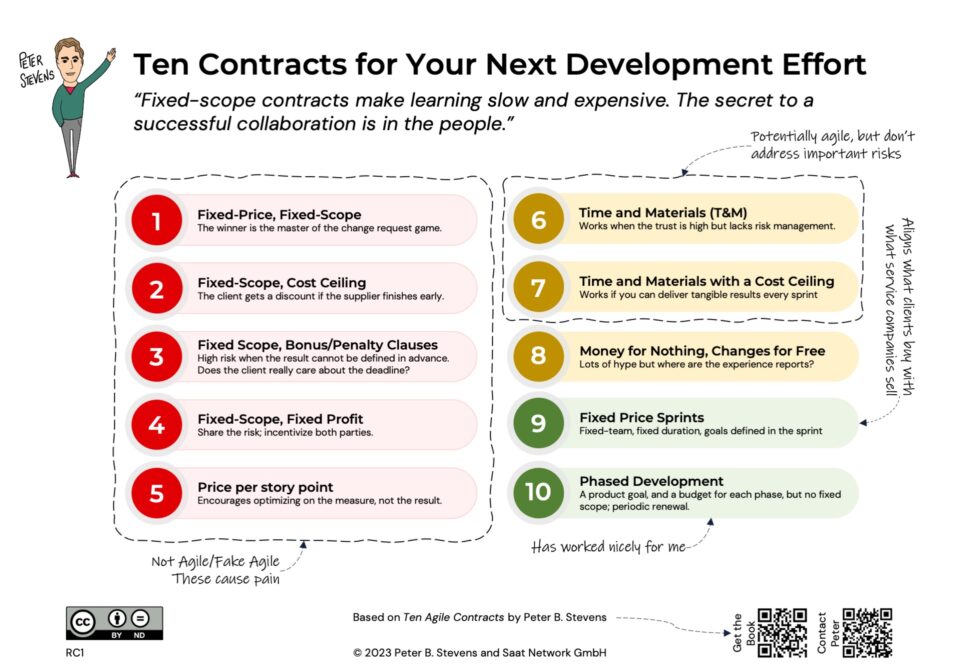The Sprint Contract
05-06-2019Time and Materials (T&M) Projects
07-06-2019 |
| Revenue is constant, regardless of the effort applied or the actual delivery date. |
Desired Benefit: Clarify all the questions so the purchasing decision can be made on price. Move the risk for time and budget overruns to the supplier.
Structure: Agree on the deliverables, deliver it. Send a bill. Customers like fixed price projects because it gives them security (or at least they think so).
Decision-Making: Generally, the customer’s governance level decides on changes and on whether things are done. This approach works better for runways than for smartphones because feedback cycles are usually relatively slow.
Scope changes: The name says it all, doesn’t it? The change request game (correction: change request process) is intended to limit scope changes. This process is costly, and the changes are usually not preventable.
Risks: Obvious risk is on the side of the supplier. If the estimates are wrong, the project will lose money. A less obvious risk is the change request game, through which the supplier negotiates additional revenue through scope changes. If the supplier has badly underestimated the effort or risk, or quoted an unrealistically low price, the losses can even threaten the existence of the supplier, which also presents a problem to the customer.
Since the customer almost by definition wants more scope, ending the project can be difficult. The supplier wants the customer to be happy, so the supplier usually yields. The words ‘et cetera’ are very dangerous in the specification of a fixed price requirement.
If the supplier is not good at the change request game, the customer can milk the supplier until the supplier says, ‘No more!’. This can risk the relationship with the customer.
The biggest risk is the impact of contracting for a runway when you are actually building a smartphone. Decision-making is slow and often far removed from the project team. The chances of arriving late with the wrong product are high, and this can have catastrophic consequences.
Relationship: Competitive to indifferent. Customers generally want to have more, and suppliers generally want to do less. The supplier wants the customer to be happy, so usually the supplier yields.
Tip: Specify the functional requirements with a user story or complete sentences that use active verbs, for example: “As a job hunter, I want to search for a job by location, so I can find a job close to where I live.” This makes it clear whether the backlog item has been achieved. You can do it, or you can’t. But it leaves negotiable how to achieve it. This gives you both an important wiggle room to simplify the implementation and makes it easier to declare a new request to be out of scope.
Mike Cohn’s classic, Agile Planning and Estimating offers strategies for estimating and pricing these kinds of projects.




